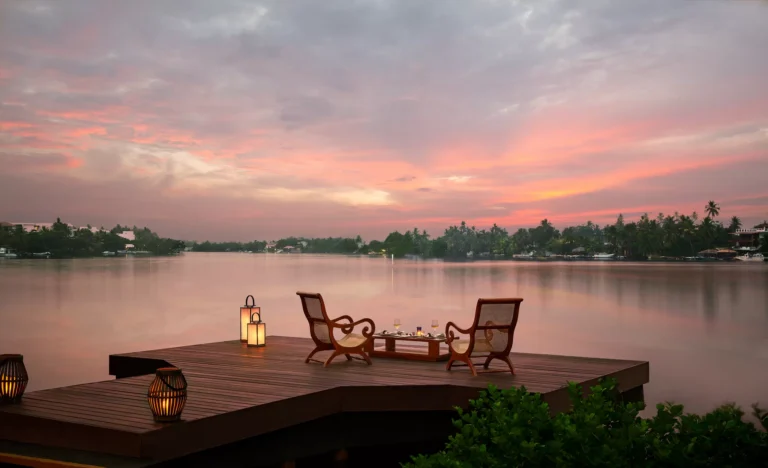Geoffrey Bawa was Sri Lanka’s most famous architect. He was known for using both ancient and modern influences, and creating architecture that sat well with, and merged with the natural environment. There are several locations where his work can be admired. In Colombo, the house where he once lived is now a museum. In 1947 he built Lunuganga Estate as his country home. The elegant ‘tropical-modernist’ design is typical of Bawa’s work, who was internationally recognised for his unique ability to blend distinct buildings with their natural surroundings.
Lunuganga (meaning ‘Salt River’ in Sinhalese) sits on the shore of Dedduwa Lake, and comprises of 15-acres of tranquil gardens. The estate is said to have been used as a cinnamon plantation, followed by a rubber plantation during the Dutch and British period respectively, before being taken over by Bawa in 1949 to develop as his weekend bungalow.
The enchanting retreat and fascinating gardens of Lunuganga was often considered a beautifully crafted experimental ground for Bawa, whose extraordinary work can be seen amidst the many architectural charms across the estate. Elements of Italian Renaissance gardens, English landscaping, Japanese garden art, and the water gardens of ancient Sri Lanka come together to form Bawa’s most extravagant creation – a mecca for those passionate about landscape design and architectural history.
Bawa’s former home has now been converted to a hotel, open for visitors, and includes 10 bedrooms and suites, which are preserved as they existed during the lifetime of the architect and are decorated with a resplendent mixture of antique and modern furniture, and traditional and contemporary art.
Geoffrey Bawa was famous for his tropical modernist style of architecture, features of which include blurred boundaries between indoor and outdoor areas, linear verandas, and windows that framed views of both, inside and outside a room.
Lunuganga now also includes the three-bedroom house of Bawa’s dear friend – Ena de Silva. A batik artist based in Colombo, Ena commissioned Bawa to design her home in 1962 – a pivotal project in his life’s work. In 2009, when the land was sold and the house planned to be demolished, the Bawa Trust stepped in with a brilliant idea – to relocate the house to No. 5 at Lunuganga, a space that borders Bawa’s Lunuganga estate. The house took three months to disassemble and six years to rebuild, and everything from the frangipani tree in the front courtyard to the slabs of river stone remains just as it was in the original house.
A tour of Lunuganga will take you through the magical gardens. Every turn and bend in Lunuganga is an interesting experience – with so many exotic plants, trees, and views to take in. The house is adorned with paintings and photographs that are a marvel in its own right. You will also have the opportunity to visit No. 5at Lunuganga (Ena’s House), if it isn’t occupied at the time.







